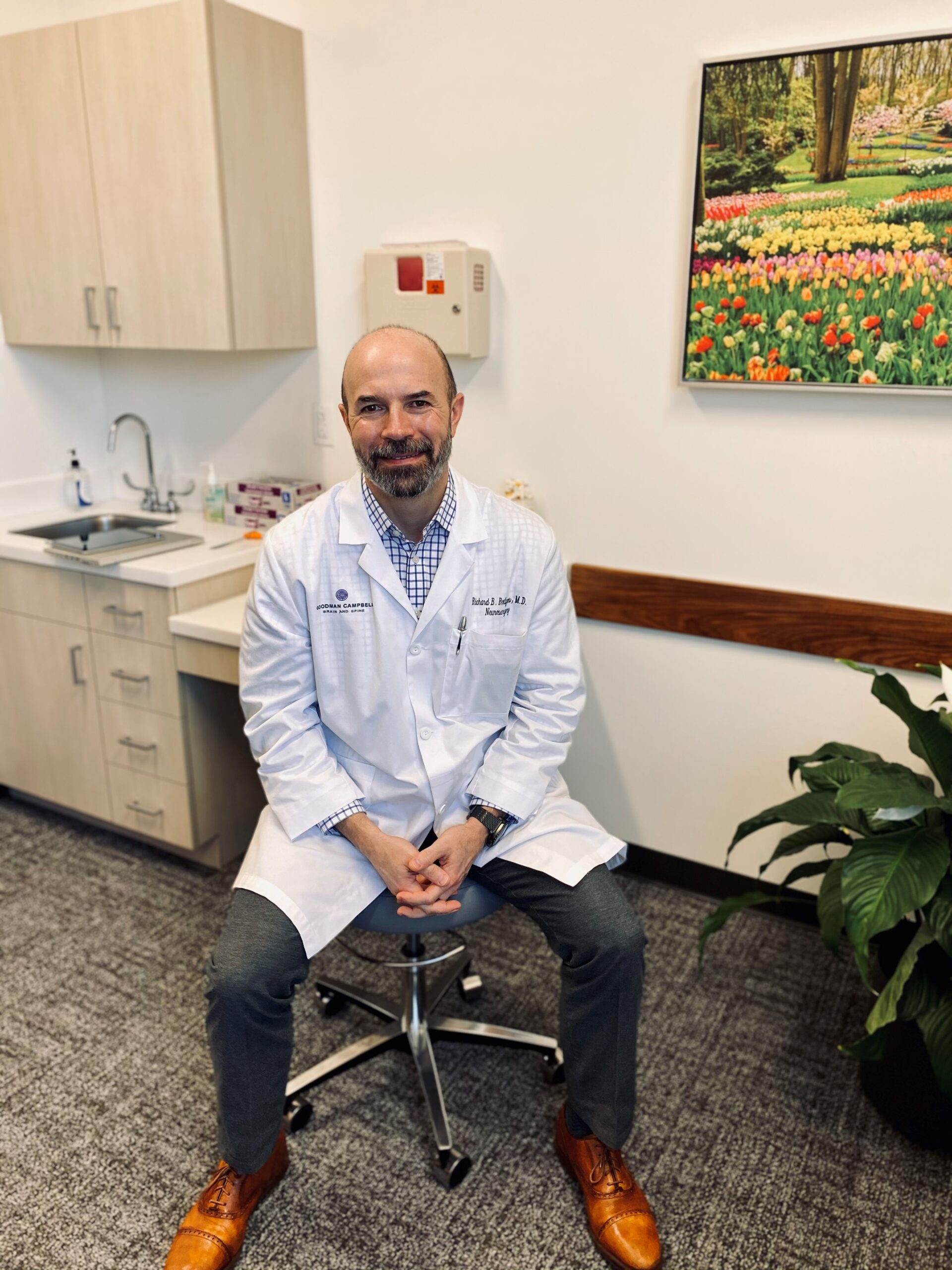Traumatic brain injury (TBI)—a trauma to the brain caused by an external force—is the most common form of acquired brain injury. According to CDC data, about 2.87 million TBI-related ER visits, hospitalizations, and deaths occurred during 2014 alone.
March is Brain Injury Awareness Month, when brain and spine physicians spotlight the prevalence of these injuries and their effect on patients and their families. Goodman Campbell Brain and Spine has treated quite a few patients with brain injuries over the years. So we’re well acquainted with the complications that can arise—as well as the broad range of treatments and techniques that will help patients heal and recover successfully.
A Range of Severity
The range of treatments is broad because the severity of brain injury varies greatly by case. Apart from the patients we treat surgically, our physicians are always monitoring a good many more whose post-trauma scans show injuries that are severe—but that may not currently require surgery.
 “A lot of the management of severe brain injury involves doing something to get pressure under control,” said Goodman Campbell neurosurgeon Dr. Richard Rodgers. “When a patient does require surgery, our most common surgical intervention is at the bedside, with the placement of a probe into the head so we can monitor pressure or drain spinal fluid to treat that elevated pressure. We can tell what the oxygen level is in the brain tissue, and we can make adjustments to the blood pressure or to the ventilator to help manage that.”
“A lot of the management of severe brain injury involves doing something to get pressure under control,” said Goodman Campbell neurosurgeon Dr. Richard Rodgers. “When a patient does require surgery, our most common surgical intervention is at the bedside, with the placement of a probe into the head so we can monitor pressure or drain spinal fluid to treat that elevated pressure. We can tell what the oxygen level is in the brain tissue, and we can make adjustments to the blood pressure or to the ventilator to help manage that.”
At other times, said Dr. Rodgers, major surgery may be involved to remove a blood clot, repair a skull fracture, or remove a section of skull in order to make more room for the brain to swell. Whatever the nature of the treatment, having a brain and spine expert involved can help patients make a better recovery.
“Generally, outcomes from the management of severe brain injury are better when patients are taken care of in a place that has neurosurgical capabilities and a Level 1 trauma center—where people are truly interested in taking care of trauma patients and learning more about them,” said Dr. Rodgers. “Most of those patients also have some other injury; it’s multisystem trauma. So, it’s very much a team approach in managing these patients.”
A Gradual Recovery
For patients who have sustained a serious brain injury, the journey to recovery can be a long one. “Severe brain injuries are not things that people get better from overnight,” Dr. Rodgers said. “Recovery happens gradually over the course of months—even years. Though the vast majority of improvements in a brain injury patient happen over the first six months, we continue to see improvement one, even two years out.
“They may not be exactly the same person that they were before; the patient is going to have to relearn some things, and the family may also have to relearn some things about the patient. But one thing I’m always stressing to families is, ‘Better is better.’ So, if today, there’s a flicker of something that the patient didn’t have yesterday, that’s better. It doesn’t matter if it’s a lot better or only a little better. Improvement is the goal.”
The Future of Brain Injury Research
 Improvement is also the goal for Goodman Campbell’s ongoing research into brain injury and its treatments. Past studies of brain injury have looked at broad groups of patients with diverse injuries—but thus far they have not pointed the way to much more effective treatment methods, according to Heather Cero, director of research and academics at Goodman Campbell.
Improvement is also the goal for Goodman Campbell’s ongoing research into brain injury and its treatments. Past studies of brain injury have looked at broad groups of patients with diverse injuries—but thus far they have not pointed the way to much more effective treatment methods, according to Heather Cero, director of research and academics at Goodman Campbell.
“We are involved in several national, multicenter studies to look at large groups of patients that have similarities and try to better target those specific groups,” said Cero. “In the future, we expect to develop much more specific treatments geared toward what we see in imaging or clinical presentation.”
For patients who do recover from a brain injury, the prognosis for recovery (with patience and perspective) is good. “Typically, once the patient is out of the hospital and on the road to rehabilitation, it’s a steady improvement,” said Dr. Rodgers. “It’s unusual for a patient to come back with a new problem, unless it’s wound-related.”
Learn more about traumatic brain injury and other conditions we treat, and explore our patients’ stories.
